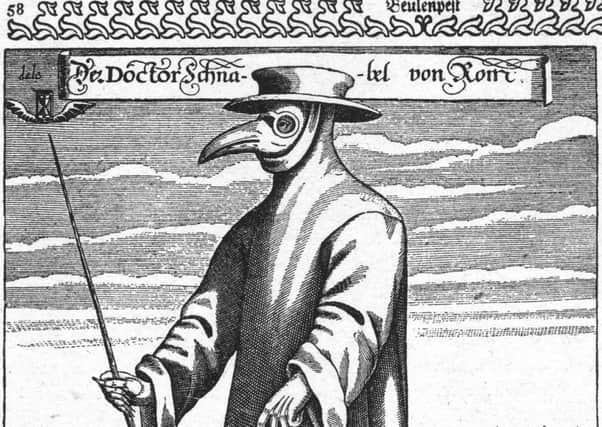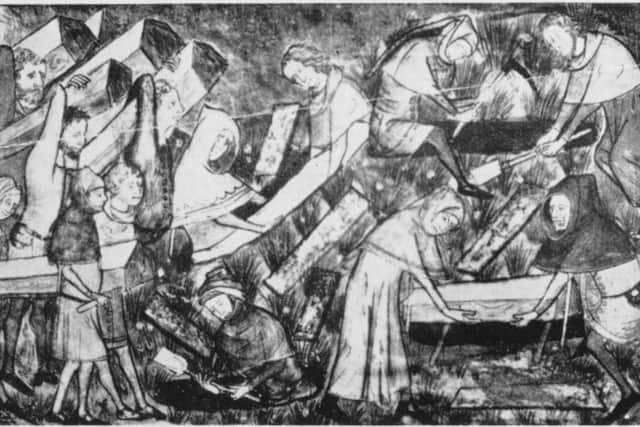Killer of an exhibition about deadliest plagues


The new exhibition– entitled Plagues! – will recall how up to a third of the Scottish population was wiped out by the deadliest outbreaks.
The “cultural history of contagious diseases” will explore the way governments tried to deal with epidemics through proclamations, laws and public health regulations.
Advertisement
Hide AdAdvertisement
Hide AdExtracts from centuries-old letters and diaries written by religious and literary figures, will be central to the exhibition, along with examples of how the media of the day attempted to explain the spread of disease. The response of contemporary scientists and doctors will also be covered in the exhibition, which opens on 11 December.


The exhibition will include the recreation of a cramped close in the capital’s Old Town, which was gripped by a major epidemic for several years in the 17th century, and explore the role of “plague doctors” like George Rae, who spent years trying to get paid for his efforts battling the plague which broke out in 1645.
They were distinctively dressed in long leather cloaks, large brimmed hats and grotesque beaked masks filled with sweet-smelling herbs. Doctors believed the herbs would repel the “evil smells” thought to carry the disease.
The overcrowded state of Edinburgh’s Old Town, combined with the heavy infestation of rats, made it easy for the 17th century plague to spread. Classic symptoms included swollen lymph glands, puss filled buboes in the armpits and groin, and severe vomiting which could be so violent as to rupture the victims’ internal organs.
Scotland was also badly affected by the 14th century Black Death, which swept across Europe – killing as many as half the population –and was thought to have entered the country by ship, with the disease carried via rat fleas.
The Black Death had initially struck in England and the Scots tried to take advantage of the crisis by invading Durham. However “the foul death of England”, as the outbreak was known north of the Border, soon struck in Scotland.
The exhibition also looks at the bubonic plague which struck Glasgow in 1900 and resulted in 16 deaths. Houses were fumigated and evacuated, clothing and bedding were disinfected, and staff in hospitals were inoculated. Publicity was also avoided to try to prevent panic spreading.
Anette Hagan, curator of the exhibition, said: “It is easy to forget how unprotected people were and how fearful they felt against the spread of contagious diseases during a time of medical helplessness and ignorance about the causes of infection. We hope that people will get a real sense of the terrifying impact of these diseases.”
Advertisement
Hide AdAdvertisement
Hide AdCases studies on outbreaks across Scotland will be featured, along with accounts from writers who lived through epidemics, including Samuel Pepys and George Orwell, and Scots poets William Soutar and George Bannatyne.
The exhibition will feature a number of proclamations drawn up to try to prevent epidemics from spreading, including enforcing quarantine arrangements for incoming ships and sailors to burning clothes and establishing hospitals outside town boundaries.
It will also examine how plagues were often seen as God passing judgment on sinners. One of the exhibits is a spiked belt, complete with metal teeth, which was strapped to the waist as an act of repentance.
Ms Hagan added: “There are some fascinating exhibits which tell amazing stories of the risk from diseases whose causes people did not know, which they could not prevent and had no way of curing.
“What we are dealing with is the past, but it’s clear from modern-day films and books the fear of pandemics still fires the imagination.”